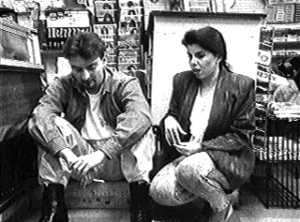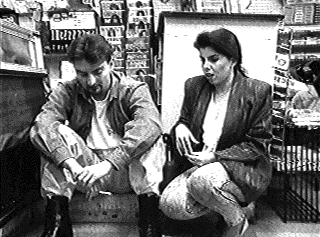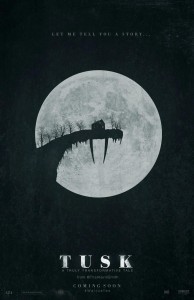How Two 1994 Movies Transformed Screen Portrayals of Female Sexuality
Posted on March 11, 2019 at 3:58 pm

For rogerebert.com’s Women Writer’s Week, I wrote an essay about how two films, both made 25 years ago, transformed the way female sexuality is portrayed on screen. Before these films, female characters either seemed unaware of sex or determined not to have sex until marriage. If they did, the consequences were usually terrible — an unwanted pregnancy, a nervous breakdown, loss of reputation, even death. There were sex comedies based on successful Broadway farces like “Sunday in New York,” “The Moon is Blue,” and the weirdest of all, written by Arthur Marx (son of Groucho), “The Impossible Years.”
David Niven (one of the failed seducers from “The Moon is Blue”) plays a psychology professor obsessed with his daughter’s virginity—in a sex comedy kind of way but still pretty creepy. Spoiler alert: She is safely married by the time she has sex (with her father’s young professional colleague/rival, hmmm, wonder what a psychology professor would make of that). And somehow the act of having sex instantly transforms her into a mature, thoughtful, responsible person as well, just in time for her dad to start worrying about her younger sister.
Other movies feature the tragic consequences of pre-marital sex. In “Where the Boys Are” Yvette Mimieux is not only raped but also hit by a car as the consequence for her decision to have sex on spring vacation in Fort Lauderdale. Worst of all, “they’re not even Yalies.” Meanwhile, Dolores Hart, who intellectually is in favor of sexual autonomy and freedom from shame for young women, maintains her purity and thus achieves the ultimate—an invitation to the spring dance from handsome Ivy Leaguer George Hamilton.

This idea that sexual experience was evidence of a healthy, confident ownership of sexual expression was an enormous shift, the foundation for later films like the raunchy but sweet-natured sex comedy “American Pie” (1999), also revolutionary in the female characters’ ownership of their sexuality, compared to “Porky’s” (1981) or “Revenge of the Nerds” and “Sixteen Candles” (both 1984), where the perspective is all about male sexual gratification including voyeurism, sexual assault, and a boy selling a look at a teenage girl’s underwear.
2018’s “Blockers,” like “The Impossible Years,” also featured parents who were way too invested in whether their daughters were going to have sex. But this time, the point of view of the movie was very much on the side of the girls and their ability to make their own choices. Series like “Big Mouth,” “PEN15,” and “Broad City,” have characters who may make some bad decisions and suffer the consequences, but they do not pretend that sexual desire is wrong or bad. They follow in the steps of “Clerks” and “Four Weddings and a Funeral,” as those two films provided a turning point for healthier depictions of women and our right to our feelings and our choices.
Where once slasher films almost made killing teens who had sex a given, after “Clerks” and “Four Weddings and a Funeral” came “Scream,” with a heroine who only after having sex achieved the wisdom and power to defeat the killer(s).



